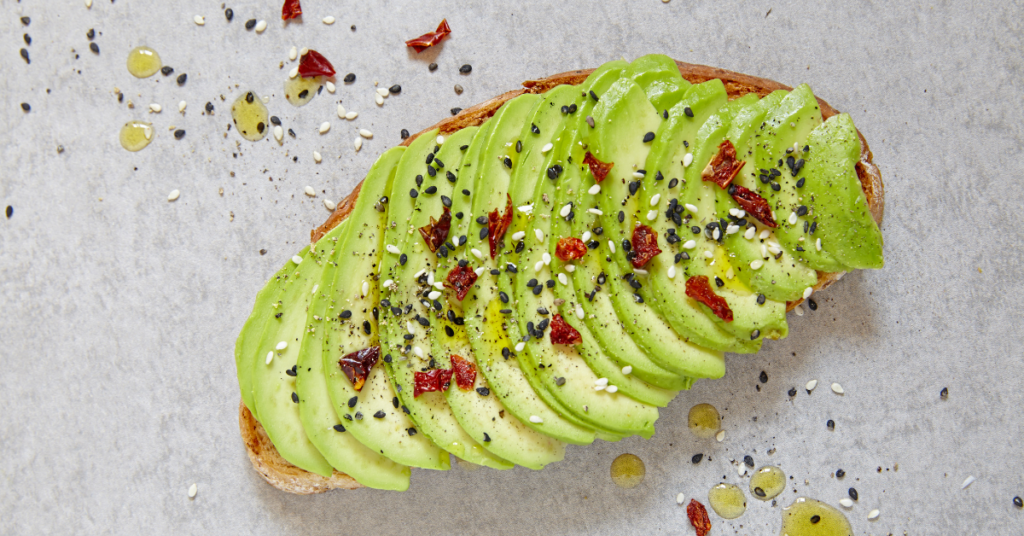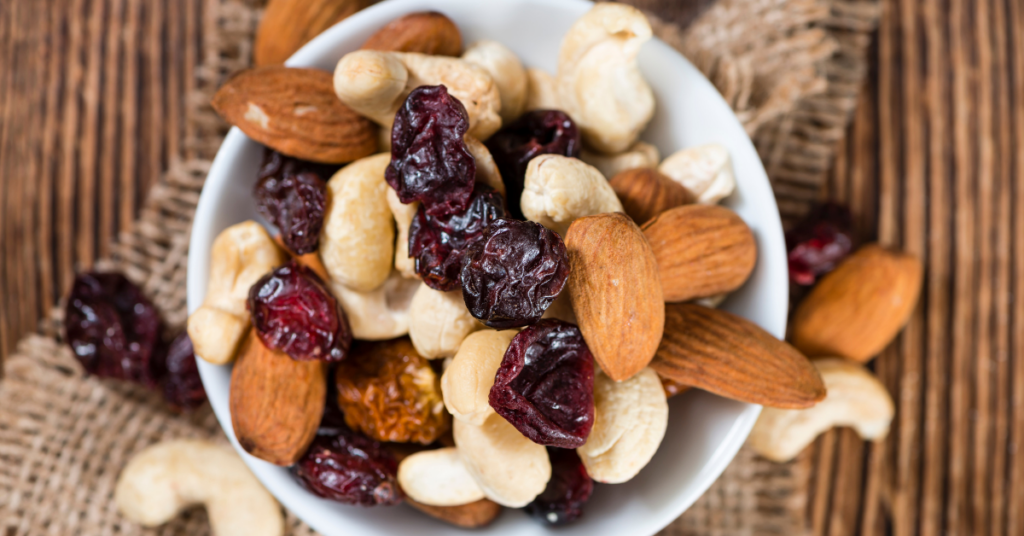Article at a Glance:
- Every day, we’re exposed to harmful toxins in the air, water, food, and common household products.
- These toxins contribute to health problems like hormone disruption, inflammation, and metabolic disorders.
- Simple steps like choosing organic food, using non-toxic cleaning products, and filtering your air and water can significantly reduce exposure.
Every day, we’re exposed to toxins, from the air we breathe to the food we eat and the products we use on our skin. But what is a toxin, and why should we be concerned?
A toxin refers to any substance — whether naturally occurring or man-made — that disrupts the body’s normal functions, contributes to inflammation, or interferes with metabolic, hormonal, or neurological processes. These include pollutants in the air and water, chemicals in food and household products, heavy metals, endocrine disruptors, and synthetic compounds that can accumulate in the body.
These substances are everywhere, and while our bodies are designed to handle some level of exposure, the sheer amount in modern life can be overwhelming to our detoxification systems. Over time, these environmental stressors can weaken the body’s ability to function optimally.
By eliminating known offenders and minimizing exposure to unavoidable toxins, we can significantly reduce our toxic load. In this article, we’ll explore the top environmental toxins you encounter daily and, most importantly, how to avoid them.
1. Air Pollution
Air pollution isn’t just a problem for big cities — it finds its way into our homes, gyms, and workplaces.
Common pollutants include particulate matter (PM2.5) in the form of microscopic dust and smoke, nitrogen dioxide (NO₂) from car exhaust and factories, and volatile organic compounds (VOCs) from household products like air fresheners and paint. Long-term and even short-term exposure can lead to respiratory issues.
How to Avoid It:
- Use a stand-alone or whole-house air purifier with a high-efficiency filter to remove dust, pollen, smoke, and other airborne pollutants, helping to improve indoor air quality.
- Keep indoor plants like peace lilies and Boston ferns, which naturally absorb toxins and improve indoor air quality by filtering out harmful chemicals.
- Avoid exercising in high-traffic areas where pollution is highest, as breathing deeply in polluted environments increases toxin intake and lung irritation.
2. Pesticides in Food
Pesticides are chemicals used in agriculture to protect crops from pests, weeds, and diseases, but they often leave behind residues on the food we eat. While regulatory limits exist, some conventionally grown foods carry higher levels of pesticide residues than others.
Research has shown that people who eat organic food have significantly lower pesticide residues in their bodies. Choosing organic produce when possible and washing fruits and vegetables thoroughly can help reduce exposure without the need for drastic dietary changes.
How to Avoid It:
- Choose organic produce whenever possible, particularly for the Dirty Dozen — a list of fruits and vegetables that tend to have the highest pesticide residues, including strawberries, spinach, and apples.
- If buying organic isn’t an option, prioritize foods from the Clean Fifteen, a group of produce items with naturally lower pesticide residues, such as avocados, sweet corn, and pineapples.
- Wash fruits and vegetables thoroughly with a baking soda or vinegar solution to help remove surface pesticide residues and dirt before consuming.
3. Plastics and BPA
Bisphenol A (BPA) and phthalates, chemicals commonly used as plasticizers, can disrupt hormone function (these are often called endocrine disruptors). Over time, this may lead to weight gain, metabolic imbalances, and reproductive health concerns.
These chemicals lurk in food packaging, receipt paper, water bottles, and even personal care products, making them tough to avoid completely. Still, small changes in daily habits can help reduce exposure.
How to Avoid It:
- Use glass or stainless steel for food storage and water bottles to prevent chemical leaching from plastics, which can introduce endocrine disruptors into your food and drinks.
- Avoid microwaving food in plastic containers, as heat can cause plastics to release harmful chemicals like BPA and phthalates into your food.
- Say no to cash register receipts, which are often coated in BPA, a chemical that can be absorbed through the skin. If possible, opt for digital receipts instead.
4. Heavy Metals (Mercury, Lead, Arsenic)
According to the World Health Organization, heavy metals like mercury, lead, and arsenic sneakily make their way into our bodies through tainted water, certain seafood, industrial pollution, and everyday items like cookware and cosmetics.
Over time, they build up, potentially causing neurological damage, immune breakdowns, and metabolic chaos.
How to Avoid It:
- Limit consumption of high-mercury fish, such as tuna and swordfish, as mercury accumulates in the body over time and can negatively impact the nervous system. Opt for lower-mercury alternatives like salmon, sardines, and trout.
- Install a high-quality water filter, such as a reverse osmosis or activated carbon filter, to reduce exposure to heavy metals like lead and arsenic that may be present in tap water.
- Incorporate foods that support heavy metal detoxification, such as cilantro, chlorella, and garlic, which may help bind to and eliminate heavy metals from the body over time.
5. Endocrine Disruptors in Personal Care Products
Groups like the Environmental Working Group (EWG) highlight that many skincare and beauty products contain parabens, phthalates, and synthetic fragrances, which can disrupt hormonal balance and potentially spark skin irritation or sensitivities.
Found in lotions, shampoos, perfumes, and makeup, they make daily exposure almost unavoidable.
How to Avoid It:
- Read ingredient labels carefully and avoid products containing parabens, phthalates, and “fragrance,” which is a catch-all term often hiding hormone-disrupting chemicals.
- Choose natural deodorants and organic skincare brands made with simple, plant-based ingredients to reduce exposure to synthetic chemicals.
- Use the EWG Skin Deep database to research skincare and beauty products, ensuring they meet high safety standards and contain minimal harmful ingredients.
6. Household Cleaning Products
All-purpose cleaners, laundry detergents, and air fresheners often contain toxic chemicals like ammonia, chlorine (bleach), and phthalates. Released into the air during use or absorbed through skin, they contribute to indoor air pollution and can cause skin irritation.
These substances are tied to respiratory issues, eye irritation, and hormone imbalances. Over time, prolonged exposure may raise risks of allergic reactions, endocrine disruption, and other serious health concerns.
How to Avoid It:
- Switching to natural cleaning solutions like vinegar, baking soda, and castile soap can effectively clean surfaces without introducing harmful chemicals into your home environment.
- Use essential oils like lemon or eucalyptus oil for fragrance instead of chemical sprays, which almost always contain synthetic fragrances and phthalates that can contribute to your overall toxic burden.
- Opt for eco-friendly laundry detergents that are free from synthetic fragrances, phosphates, and whiteners, which can leave behind harmful residues on clothing and contribute to water pollution.
7. Tap Water
Despite filtration and treatment to meet safety standards, tap water can still contain chlorine, fluoride, pesticides, pharmaceutical residues, and heavy metals due to outdated infrastructure, agricultural runoff, and industrial contamination.
While treatments remove many harmful pathogens, they are not designed to get rid of all trace contaminants. As a result, substances from farming chemicals, industrial waste, and old plumbing systems may still be in your water, affecting taste, odor, and, in some cases, long-term health.
How to Avoid It:
- Invest in a reverse osmosis water filter or a high-quality activated carbon filter to remove contaminants like heavy metals, chlorine, and pesticides, ensuring safer drinking water.
- Use a shower filter to reduce chlorine and chemical exposure while bathing, which can help minimize skin irritation and respiratory discomfort.
- Test your water annually with a home kit or professional service to identify specific contaminants, so you can tailor your filtration to what’s actually in your pipes.
8. Mold and Mycotoxins
Indoor mold exposure can contribute to respiratory problems, cognitive difficulties, and persistent inflammation, particularly in damp or poorly ventilated spaces.
Some molds produce mycotoxins, toxic compounds that can be found in contaminated food sources like coffee and grains, potentially affecting immune and gut health over time.
How to Avoid It:
- Use a dehumidifier in damp areas like basements and bathrooms to prevent mold growth and reduce excess moisture in the air.
- Regularly inspect for water leaks and clean mold with vinegar, which is effective at killing mold without introducing harsh chemicals like bleach.
- Choose organic coffee and grains, as they are less likely to contain mycotoxins due to stricter farming and storage practices.
9. Processed Foods and Additives
Artificial additives like colors, preservatives, and emulsifiers are widely used in processed foods to enhance flavor, texture, and shelf life.
However, frequent consumption of these additives has been linked to gut imbalances, metabolic disruptions, and potential long-term health concerns. While regulatory agencies set safety limits, cumulative exposure from multiple sources may have unforeseen effects on overall well-being.
How to Avoid It:
- Read labels when buying packaged foods and be cautious of ingredients you can’t pronounce, such as azodicarbonamide or butylated hydroxyanisole.
- Swap your favorite processed snacks for brands that use fewer additives and higher-quality ingredients. Look for options with minimal preservatives, natural sweeteners, and recognizable ingredients.
- Cook simple meals at home using whole foods like fruits, vegetables, and grains to cut down on hidden additives and control what goes into your body.
10. EMFs and Blue Light
Electromagnetic fields (EMFs) from WiFi, mobile phones, and Bluetooth devices emit low-level radiation that may contribute to oxidative stress and disrupt cellular processes.
Though long-term studies are limited due to the relatively recent rise of these technologies, their cumulative daily impact is likely to amplify over time as technology becomes more powerful. Compounding this, blue light from screens further strains the body, particularly by disrupting sleep cycles.
How to Avoid It:
- Turn off WiFi routers at night or use a wired Ethernet connection to reduce prolonged exposure to EMFs while you sleep.
- Reduce blue light exposure in the evening by using blue light-blocking glasses or setting screens to night mode to support natural melatonin production and sleep quality.
- Keep phones in airplane mode or away from your body when not in use to limit unnecessary EMF exposure, especially during sleep.
LiveComplete Takeaways
Reducing toxins in your environment doesn’t have to be overwhelming. By making gradual, informed swaps and prioritizing cleaner living, you can significantly reduce your exposure and support your overall well-being, such as:
- Small changes make a big difference—start by replacing one toxic product at a time.
- Prioritize air, water, and food quality to reduce your overall toxic burden.
- Choose cleaner alternatives for personal care, cleaning supplies, and household items.
- Be mindful of daily habits, like how you store food and limit EMF exposure.
- Detoxification isn’t about quick fixes—it’s about consistent, informed choices that minimize exposure.
Sources
- Oates, L., Cohen, M., Braun, L., Schembri, A., & Taskova, R. (2014). Reduction in urinary organophosphate pesticide metabolites in adults after a week-long organic diet. Environmental Research, 132, 105–111. https://doi.org/10.1016/j.envres.2014.03.021



